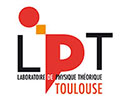Loading...
Derniers dépôts, tout type de documents
Quantum cloning is a fundamental protocol of quantum information theory. Perfect universal quantum cloning is prohibited by the laws of quantum mechanics, only imperfect copies being reachable. Symmetric quantum cloning is concerned with case when the quality of the clones is identical. In this work, we study the general case of $1 \to N$ asymmetric cloning, where one asks for arbitrary qualities of the clones. We characterize, for all Hilbert space dimensions and number of clones, the set of all possible clone qualities. This set is realized as the nonnegative part of the unit ball of a newly introduced norm, which we call the $\mathcal{Q}$-norm. We also provide a closed form expression for the quantum cloner achieving a given clone quality vector. Our analysis relies on the Schur-Weyl duality and on the study of the spectral properties of partially transposed permutation operators.
In the quest for robust and universal quantum devices, the notion of simulation plays a crucial role, both from a theoretical and from an applied perspective. In this work, we go beyond the simulation of quantum channels and quantum measurements, studying what it means to simulate a collection of measurements, which we call a multimeter. To this end, we first explicitly characterize the completely positive transformations between multimeters. However, not all of these transformations correspond to valid simulations, as evidenced by the existence of maps that always prepare the same multimeter regardless of the input, which we call trash-and-prepare. We give a new definition of multimeter simulations as transformations that are triviality-preserving, i.e., when given a multimeter consisting of trivial measurements they can only produce another trivial multimeter. In the absence of a quantum ancilla, we then characterize the transformations that are triviality-preserving and the transformations that are trash-and-prepare. Finally, we use these characterizations to compare our new definition of multimeter simulation to three existing ones: classical simulations, compression of multimeters, and compatibility-preserving simulations.
We introduce the Ising Network Opinion Formation (INOF) model and apply it for the analysis of networks of 6 Wikipedia language editions. In the model, Ising spins are placed at network nodes/articles and the steady-state opinion polarization of spins is determined from the Monte Carlo iterations in which a given spin orientation is determined by in-going links from other spins. The main consideration is done for opinion confrontation between {\it capitalism, imperialism} (blue opinion) and {\it socialism, communism} (red opinion). These nodes have fixed spin/opinion orientation while other nodes achieve their steady-state opinions in the process of Monte Carlo iterations. We find that the global network opinion favors {\it socialism, communism} for all 6 editions. The model also determines the opinion preferences for world countries and political leaders, showing good agreement with heuristic expectations. We also present results for opinion competition between {\it Christianity} and {\it Islam}, and USA Democratic and Republican parties. We argue that the INOF approach can find numerous applications for directed complex networks.
Communication complexity quantifies how difficult it is for two distant computers to evaluate a function f(X,Y), where the strings X and Y are distributed to the first and second computer respectively, under the constraint of exchanging as few bits as possible. Surprisingly, some nonlocal boxes, which are resources shared by the two computers, are so powerful that they allow to collapse communication complexity, in the sense that any Boolean function f can be correctly estimated with the exchange of only one bit of communication. The Popescu-Rohrlich (PR) box is an example of such a collapsing resource, but a comprehensive description of the set of collapsing nonlocal boxes remains elusive. In this work, we carry out an algebraic study of the structure of wirings connecting nonlocal boxes, thus defining the notion of the "product of boxes" P⊠Q, and we show related associativity and commutativity results. This gives rise to the notion of the "orbit of a box", unveiling surprising geometrical properties about the alignment and parallelism of distilled boxes. The power of this new framework is that it allows us to prove previously-reported numerical observations concerning the best way to wire consecutive boxes, and to numerically and analytically recover recently-identified noisy PR boxes that collapse communication complexity for different types of noise models.
Sujets
Matrix model
0375-b
Amplification
Cloning
CheiRank
Adaptative denoiser
Random graphs
Entanglement
Plug-and-Play
Nonlinearity
Model
Quantum chaos
ADMM
PageRank algorithm
Information theory
2DEAG
FOS Physical sciences
Quantum Physics quant-ph
Random matrix theory
Mécanique quantique
Quantum image processing
Asymmetry
Semi-classique
Harper model
Adaptive signal and image representation
Localization
Adaptive filters
PageRank
Qubit
Solar System
Structure
Opinion formation
Unitarity
Information quantique
Spin
Adaptive transformation
International trade
Quantum denoising
Toy model
Disordered Systems and Neural Networks cond-matdis-nn
Aubry transition
Quantum mechanics
Numerical calculations
Wikipedia networks
Chaos quantique
Critical phenomena
World trade
Deep learning
Anderson localization
Husimi function
Fidelity
2DRank
Super-Resolution
Quantum denoiser
Poincare recurrences
Google matrix
Algebra
Clonage
Interférence
Quantum computation
Adaptive transform
Dark matter
Atom laser
Community structure
Denoising
Random
Quantum information
Semiclassical
Many-body problem
Ordinateur quantique
Unfolding
Hilbert space
2DEG
Wikipedia network
Complex networks
Social networks
Decoherence
Chaotic dynamics
Covariance
Chaotic systems
Quantum many-body interaction
Duality
Wigner crystal
Dynamical chaos
Markov chains
7215Rn
Entropy
0545Mt
Calcul quantique
Chaos
CheiRank algorithm
Directed networks
2DRank algorithm
World trade network
Correlation
6470qj
Statistical description
Wikipedia
ANDREAS BLUHM
Networks
